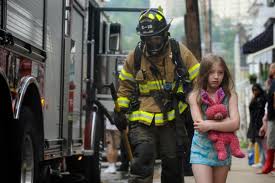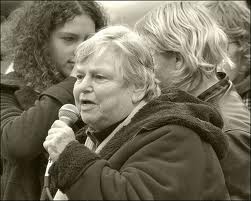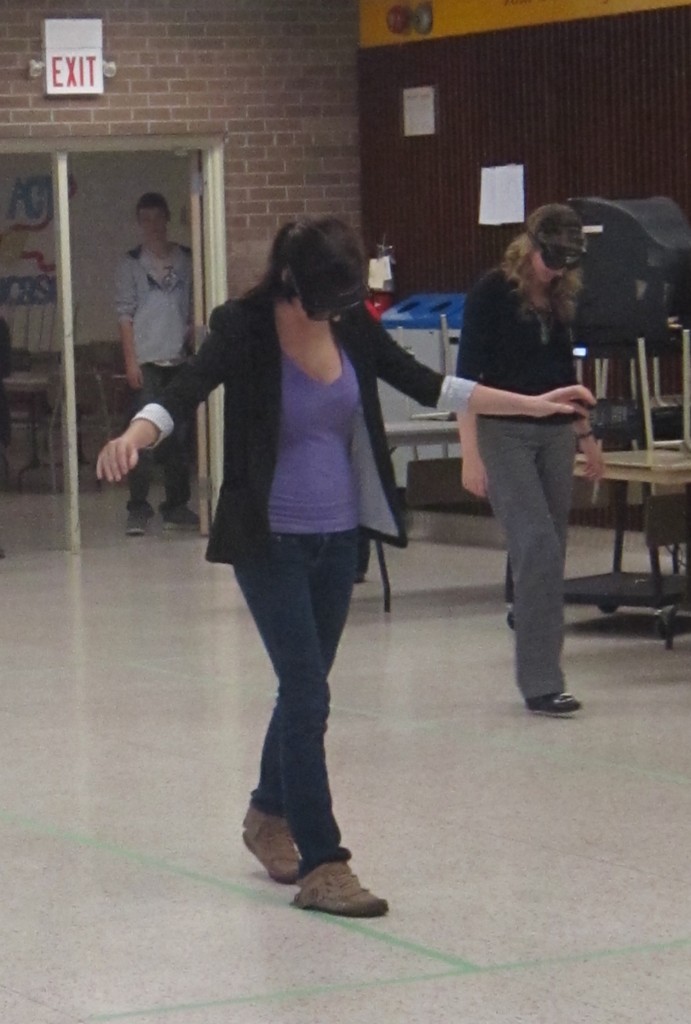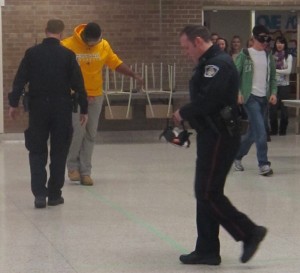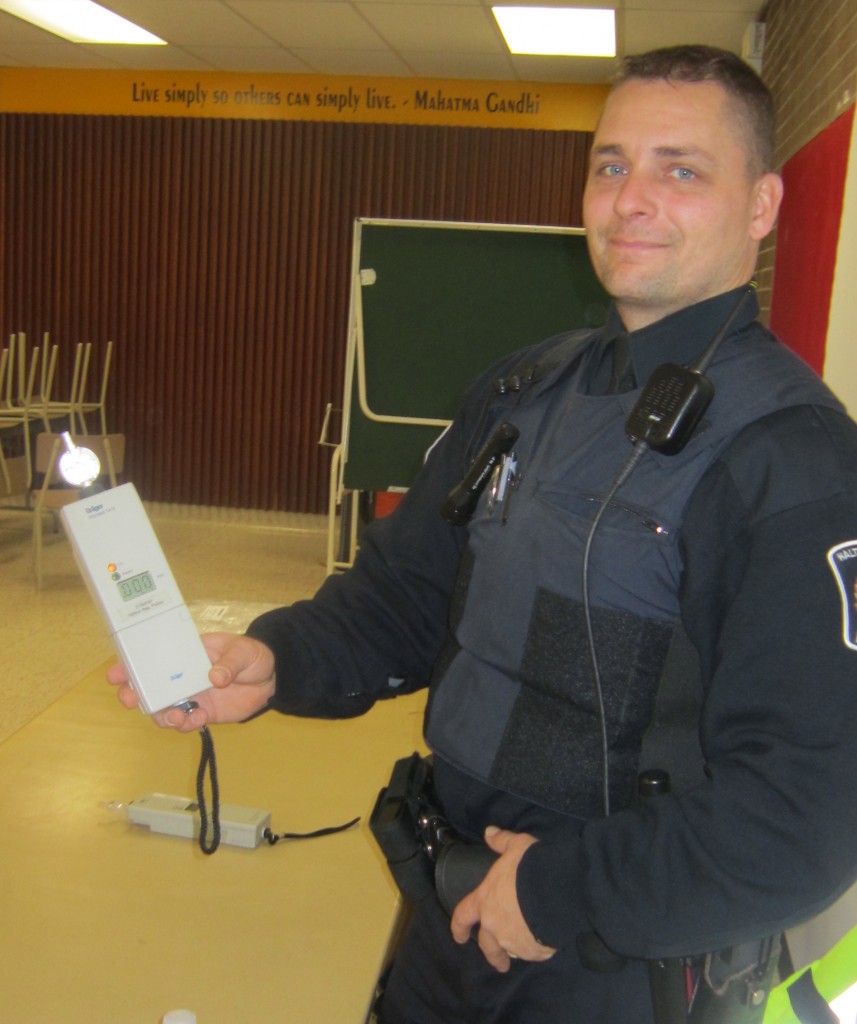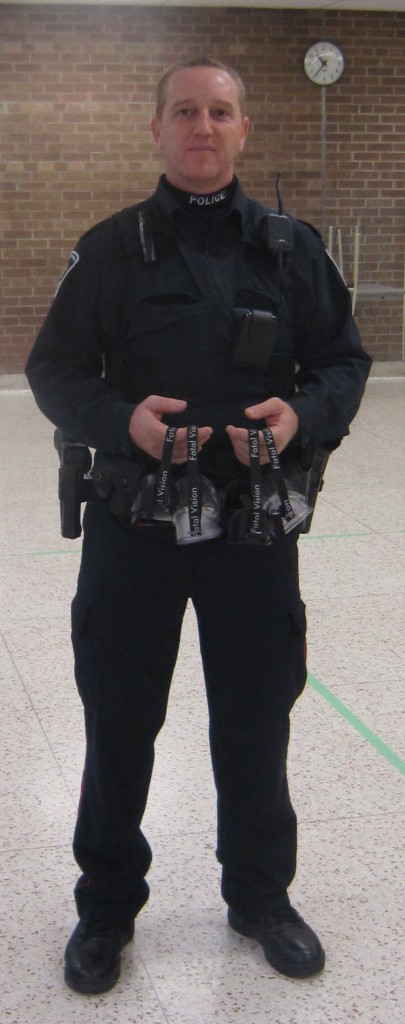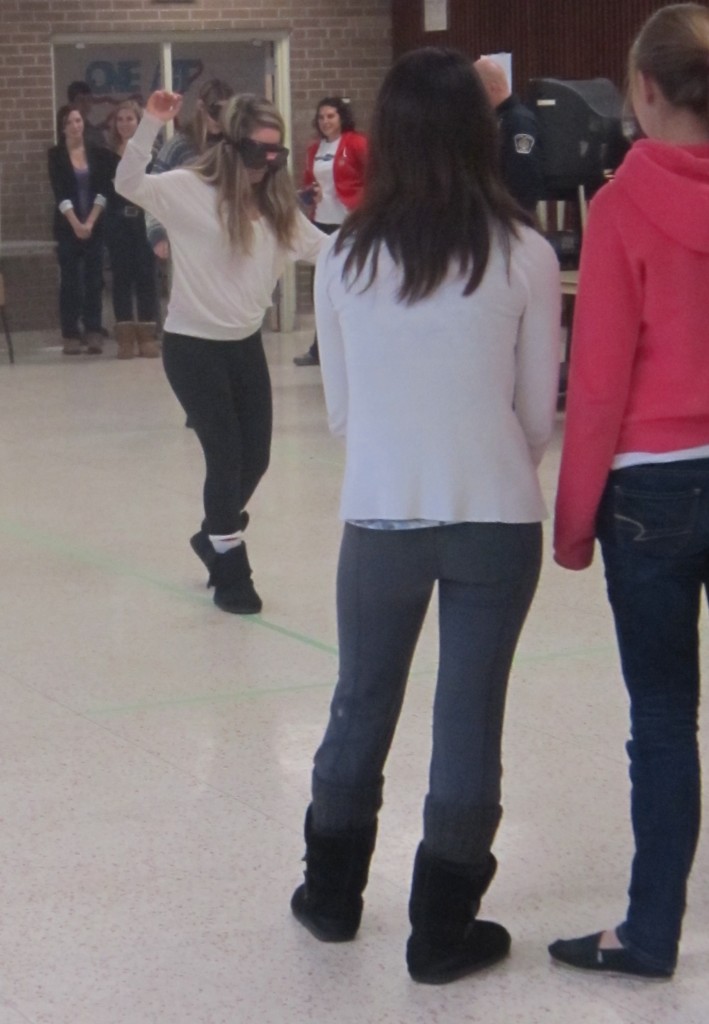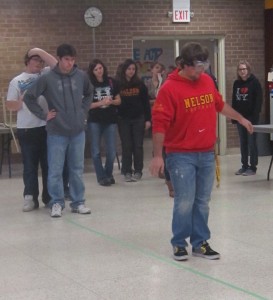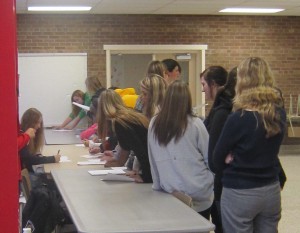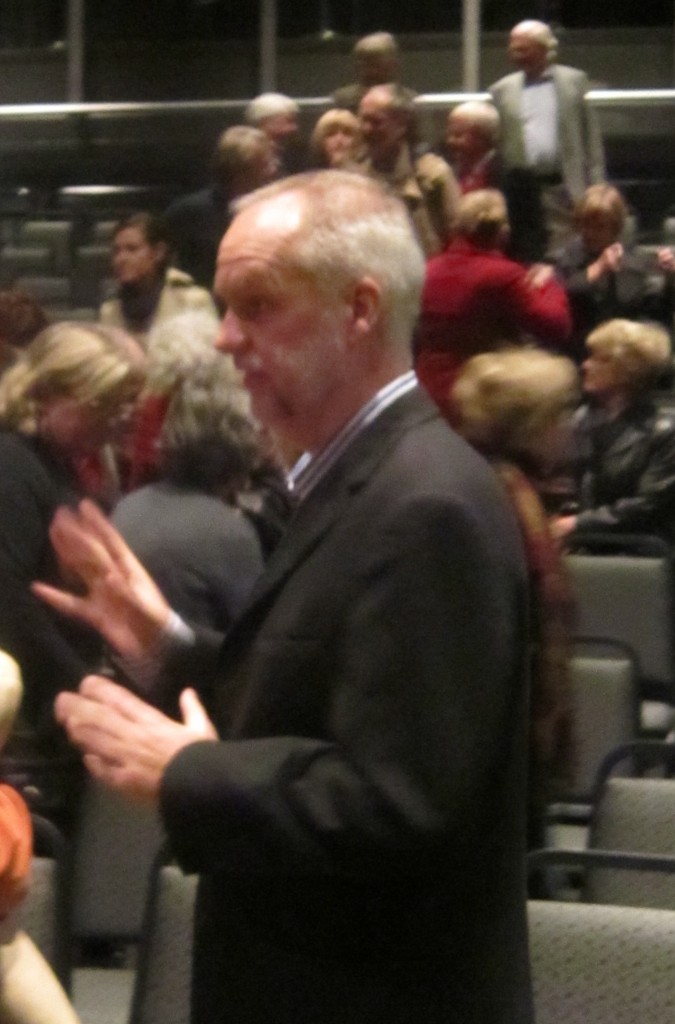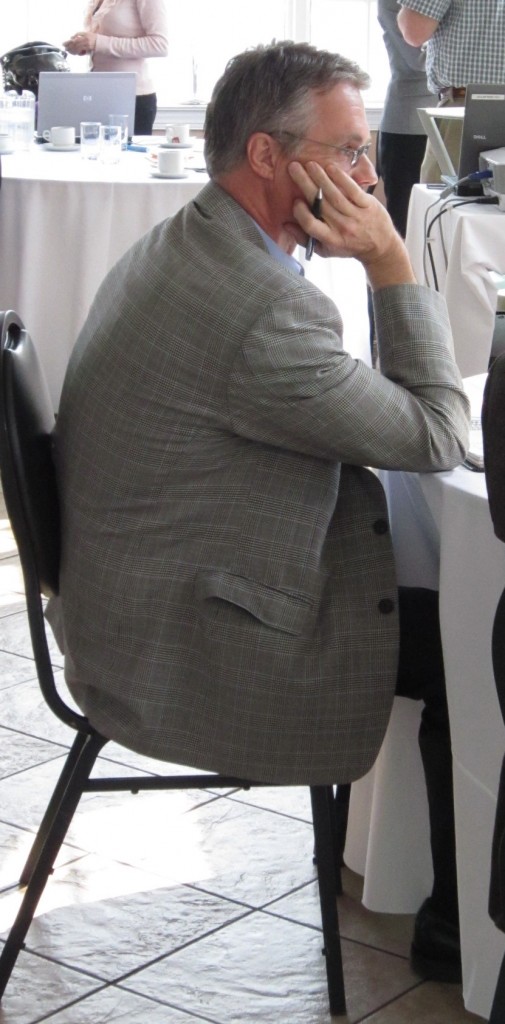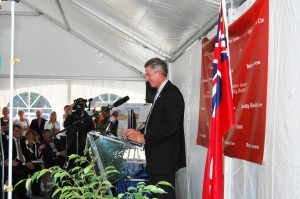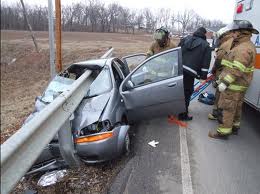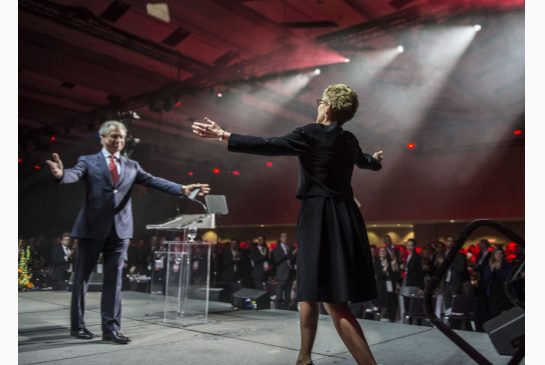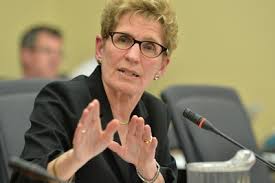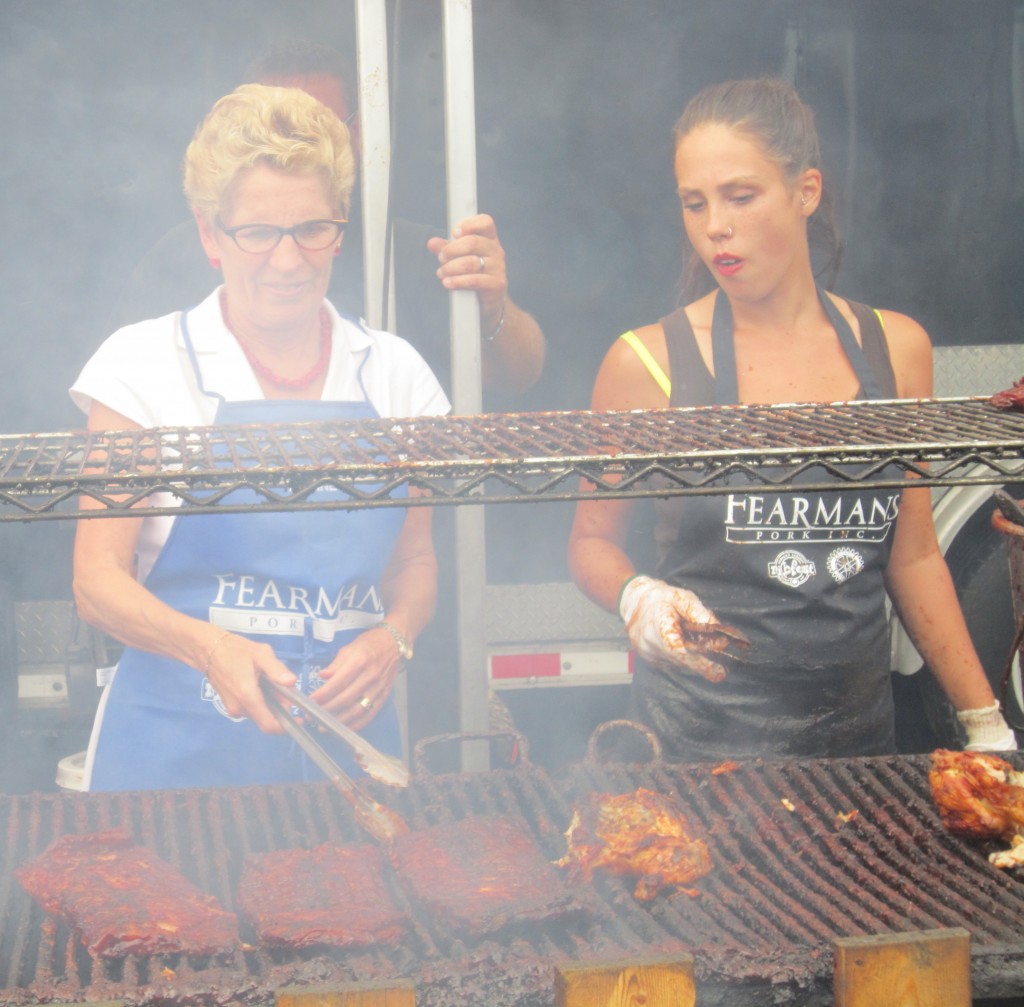

A report by the Mayor’s Citizen Advisory Committee on Civic Engagement – April 2010
Mission Statement
Through community consultation and research into best practices, to determine and recommend to the Mayor, Council, and citizenry, those methods the Committee feels will best enable citizens to become more engaged in their communities and empowered to effectively communicate their concerns to the government and other citizens, resulting in more timely citizen involvement in the decision making activities of local government
Letter from the Co-Chairs
Exceptional people do exceptional work. The people of Shape Burlington who put this report together are exceptional. They are eloquent representatives of the diversity of Burlington’s population as well as first-rate interviewers, facilitators, writers, and include a highly competent web master. All their time and personal expenses were contributed freely as caring and concerned Burlington citizens.
We thank you for volunteering and accepting our assignments without reservation. We congratulate all of you on a job well done.
We could not have developed this Report without the guidance and input of consultants Peter Macleod, Joslyn Trowbridge and Chris Ellis of MASS LBP.
We owe so much to Dr. Joey Edwardh and Ted Hildebrandt of Community Development Halton who provided the administrative services and expertise in community development.
We are honoured that Mayor Cam Jackson had confidence in our integrity and judgment to select a committee and to reach out to Burlington citizens for their views on better and more effective communication and involvement with City Council and Staff. We thank Mayor Jackson for this opportunity to serve our community. We believe we have fulfilled the terms of reference for this advisory committee.
For us, this has been a journey of discovery, which has reinforced our belief that we live in one of the finest communities in Canada.
This Report reflects accurately the views of those people who took the time and opportunity to share their opinions on how we might improve civic engagement and two-way communication with local government. City Council can honour these citizens by considering carefully each and every one of the recommendations. . . In our opinion, these eight (8) recommendations must all be implemented.
We understand that these recommendations will require City Hall and Burlington residents to re-think how local government communicates and interacts with the community in a more participatory and consensual mode. We believe the implementation of these recommendations will foster more informed deliberation, inspire greater confidence in local government, and build a more caring community.
John Boich, Co-Chair Walter Mulkewich, Co-Chair
Transforming the culture at City Hall – City Hall must reinvent itself.
As social, technological and demographic trends alter the face of every community, municipal governments are struggling to adapt their long-established practices to meet the challenges of an ever-evolving new world.
Burlington is experiencing a period of rapid growth and change. Citizens are more literate, more educated and more connected than ever before. They are also busier, more distracted and require more from those who represent them, develop the policies and provide the services in their community.
Formed at the request of the Mayor, Shape Burlington was given the freedom to act independently. We spent three months working with Burlington residents and City Hall staff and members of Council to learn more about how the City operates and how it engages with residents.
Shape Burlington is comprised of citizens who live in all areas of the city. They bring a broad mix of experience and expertise to their commitment. We were assisted in our research and procedures by MASS LBP, a public consultation company with expertise in citizen engagement and democratic innovation.
We investigated practices from communities around the world. Who is facing similar challenges? How are they doing it? What can we learn? What best practices are already being implemented, and how can Burlington create its own recommendations?
We conducted interviews with members of current Advisory Committees. We spoke with representatives of cultural and sports groups; representatives of the business community; citizen groups and high school students. We met with City staff at different levels from many different departments. We interviewed Department heads and managers, Councillors and the Mayor. And throughout, we met with many Burlington residents in public forums and listened to them via our website. Ail expressed their hopes for creating a better City and also their frustrations over how City Hail makes decisions or sometimes fails to listen.
Tasked with recording a broad spectrum of messages and observations, Shape Burlington has delineated 14 specific issues that were constant themes in our investigation. From this, we have identified eight recommendations that can help Burlington navigate the future.
Some are self-evident; some are bold. But all come from the people who live in and work for this City. They call for increased engagement and a dearer vision; for more communication to a recovery of trust; for a sense of belonging and more meaningful participation of all segments of our community.
Recommendations
Engagement: Transform the City Hall culture to promote active citizenship and civic engagement
Promoting active citizen engagement and meaningful public dialogue requires a culture shift at City Hall. A crucial first step is the development an Engagement Charter – a plain language policy document developed with public involvement that incorporates benchmarks and accountabilities, and describes the value, purpose and opportunities for citizens to influence city policies.
The charter would explain how to navigate City Hall and its services. It should stipulate best practices for various kinds of public consultation and affirm the city’s commitment to inform citizens and respond to their ideas and contributions. t would address the question of reaching out to a diverse population.
The charter would incorporate an early notification system to provide citizens and groups information about meetings, events and issues, and to allow reasonable amounts of
time to understand, discuss and develop positions before decisions are made. A guide for its development could be the Edmonton PublicInvolvement process.
Vision: Shift City Hall processes to greater involvement of all citizens in a shared vision of our city
Citizens should be more fully involved in preparing Burlington’s Strategic Plan after each municipal election. It is the single best time for them to influence the City’s long-term direction.
The 2011strategic planning process is an ideal opportunity to begin implementing the principles set out in this report. Citizens should be involved in writing the plan.In this way, they will participate in developing a vision statement for Burlington, set out with clear and measurable action plans that the community can buy into. Some participants could be chosen through citizen juries or random selection.
The strategic planning process and the municipal election itself should be linked explicitly in the minds of voters. n this way the election and the development of the strategic plan would be twinned democratic processes and act as the principal conduits through which the city renews and resets itself every four years.
Communication: Empower people by overcoming the communications deficit
The City should foster the development of an independent information service, including a web-based community news and information portal through start-up subsidies and encouraging community support.
In addition, the Communications Department at City Hall should be fundamentally transformed into a timely and reliable source of City information free of political bias. t is an essential step in providing more resources to foster information, education and continuous learning.
After a comprehensive review of diverse multimedia communications processes, the transformation would include a revamped and more frequent City Talk,webcasts of committee and Council meetings and a user-friendly, well-written website that incorporates the latest web2.0 and gov2.0 innovations to make government more accessible and interactive.
Members of Council are encouraged to develop their own communication vehicles that are separate from the corporate communications process.
A robust, independent professional media is essential in a functioning democracy. We encourage the local news outlets to develop the business and technological solutions that will allow them to reclaim their proper role in the community.
Trust: Improve the public’s trust and confidence in City government
Staff and members of Council should review their protocols and procedures for dealing
. with citizens to improve public trust,confidence and respect for citizens. This would include ongoing staff training programs and establishing cross-department and measurable
, customer service standards.
The delegation process should be overhauled so that is not an obscure or intimidating experience for citizens unfamiliar with City Hall or unaccustomed to public speaking. To make citizens feel more welcome, Council, staff and the public should work together to amend the Procedural Bylaw, develop a new manual and provide staff assistance to delegations as required.
To enhance transparency and access, Council could periodically hold its meetings in different geographical areas across the City, including libraries, community centres and schools where students could participate in the proceedings.
Belonging: Build a caring and inclusive community
The City should reach out to minorities, marginalized groups and all of Burlington’s geographical areas. This would include building greater social cohesion through strategic promotion of Burlington’s opportunities and celebrating each others’ success.
In partnership with the community, the City should establish a policy of inclusivity measurements to ensure that City policies, programs and services reflect our changing population. This includes the needs associated with changing population groups, such as seniors and people from diverse backgrounds, and the social, economic and cultural contributions of these groups. The goal is to forge a city where all participate in building the infrastructure for caring and the opportunities to belong.
As society moves faster and individuals become more mobile, creating a sense of place and marking important milestones become more significant. This can be accomplished through pageants and fairs, special occasions and events – a cycle of distinctive annual events that have widespread appeal and draw the community together.
An inclusive community is one that provides opportunities for the optimal well-being and healthy development of all children, youth and adults. All members of the community gain from social inclusion – those who are vulnerable for reasons of poverty, racism, or fear of difference – as well as the broader community that benefits when everyone is able to participate as a valued and contributing member of the community
Participation: Empower committees and community organizations that work for people
An Office of Engagement should be established to foster and implement recommendations contained in this report.
The Director of the Office, reporting to the City Manager, would implement the Engagement Charter, working with municipal departments to review their policies and design more effective forms of consultation and engagement. This would include a program to support different levels of.citizen access and providing meeting space for community/neighbourhood councils and other community-based groups organized around specific issues.
The Director should consider initiating discussions with community groups to develop a template for independent community or neighbourhood councils such as developed in Quebec City, Portland (Oregon) and Los Angeles.
The Director would provide support for Burlington’s Citizen Advisory Committees, important local institutions whose potential has not yet been fully realized because of variation in their
operation, constitution and purpose. Council needs to rethink the structure, responsibilities, standards and accountabilities of future advisory committees. One option is to establish committees that cut across different issue areas.
Youth: Reach out to the next generation
In cooperation with the school boards, Council should invest in meaningful initiatives at different grade levels. Members of Council and staff should be made available to speak to students in their schools.
A specific proposal is involvement in the Grade 10 Civics program, already in place.
Initial meetings with the Director of the Halton District School Board have produced enthusiastic interest in augmenting this program with a module that could be created with input from the City, the school boards and a committee with experience in both these fields.
Using their volunteer hours as currency, students should be brought into the planning process in ways that they help define: creating a website and social networks that allow them to engage with issues that are important to them: transit, sports facilities, bicycle paths, cultural events, festivals, environmental issues, education and diversity.
There is a genuine need, and value, to reach out to Burlington’s youth. Lifelong civic engagement begins here.
Governance: Define roles and responsibilities
A.governance review should be undertaken to clearly define and differentiate the roles and responsibilities of Council and staff.
Workshops, conducted after each election, would help ensure that Council members make effective decisions and spend their time appropriately and effectively at the policy-making level. They will also ensure that staff is empowered to do their job of administration, providing advice and implementing Council policies and decisions.
Messages & Observations
Burlington is using traditional models in a new age
The City of Burlington public involvement processes and methods of engaging the public for both decision- and policy-making are based on traditional models that belong to the past.
Significant social and demographic changes, population growth, increased urbanization, and new technology in the past 30+ years mean that changes in the modes of civic engagement and communication between citizens and government are necessary to relate to a changing society. In recent years, a wide variety of innovations in civic engagement and democratic inclusion have been developed in municipalities and communities in Canada, U.S. and globally.
Burlington is not on the cutting edge of these developments to match its leading edge economy and above average literacy and education rates.
Everyone recognizes the need for improvement
There appears to be as a broad consensus among the public, City staff and members of Council that the processes of public involvement should be improved. However, there are many different viewpoints on what and how extensive these improvements should be.
The public wants more extensive change than City Hall does.
While staff and members of Council generally agree that improvements are needed, most believe that the City is doing a better job in communicating and promoting and civic engagement than does the public. Further, the public appears to favour greater changes than those suggested by Council or staff.
Many believe that City Hall is not listening
There is a broad consensus among representatives of citizens who deal with City Hall as well as the public at large that City Council and staff is not listening. Citizens want to see that their input is taken seriously and has a meaningful impact on outcomes.
Citizen confidence in local democracy is declining
There is a broad consensus that public confidence and trust of the City and its democratic processes have declined, especially in the past few years. Most members of Council agree.
Tomorrow’s major transformative issues will require a new form of leadership.
Burlington will face a number of significant transformative issues over the next decade: greater urbanization and intensification 1 the impact of build-out on taxes, an aging population, and the need to adjust services for seniors and youth, low income groups and those from diverse backgrounds.
These issues will require leadership at all levels of City Hall to enhance civic engagement.If there is not effective public involvement in the decisions and policy-making processes, the community could become even more distressingly polarized.
Good citizenship means citizen responsibility
Good citizenship is a two-way street Citizens have a responsibility to help make a better community and take part in decision and policy making in an appropriate manner and with mutual respect. The public involvement process should give citizens the greatest opportunities to exercise those responsibilities.
Issues Governance – the roles of Council and staff
Some citizens suggested that a lack of unified direction and leadership from City Council made it more difficult for staff members to do their job and, further, that staff members were not sufficiently empowered and trusted. Others suggested that staff had undue influence over Council and its decisions. These questions of leadership and respective roles are governance issues, but they have a significant impact on the ability of City Hall to establish a high level oftrust for effective public engagement. Some citizens suggested
that staff members are frustrating to deal with because they do not have a sense of Council’s direction or goals. The public has difficulty putting issues into their strategic context when they do not understand Council’s goals or feel Council’s directions do not represent a community consensus.
Governance – size of Council
There was a widespread view that the size of Council should be re-visited. Many citizens felt that Council members were too overburdened to make good policy decisions or be able to respond as well as they should to public demands for input and service. However, Council has been the same size for 13 years and it appears that only in the past few years has the concern about its size become a major factor. So are other factors at play? There were some suggestions that the issue is not so much size as one of establishing better standards, measurements, and process for accountability. There were some suggestions that Council members need not spend as much time on service issues and they should restrict their time and efforts to focus on policy directions and major issues, and show greater trust in City staff to do their job.
Service quality and process
Many citizens thought that the quality of service, response time and staff attitude has declined. Interestingly, several members of Council agreed. Citizens’ experience with City Hall is a major determinant in creating trust in municipal government and the democratic process. Citizens have a right to be well treated, as customers and as citizens. The City does not appear to have a clear quality service policy, although one is in early stages of development.
Not au citizens feel included or respected
Some citizens felt business groups and other organizations have a better relationship with City Hall than those involved in activities such as social justice and the environment They believe that the City should do more to reach out to all citizens and sectors of society.
A number of citizens said they felt intimidated and faced an adversarial attitude on the part of Council when they attended Council or committee meetings as delegates,
Staff reports and presentations
A specific suggestion, repeated several times, was that staff reports should, as olten as possible, include options for Council and public to consider so that there is a greater ability to evaluate the best possible direction. Further, the suggestion was made that staff presentations at public meetings should be dear, succinct and relevant to the audience.
And, the suggestion was made that the Chairs of public meetings, whether they are Councillors or staff, should be trained in conducting meetings.
The need for more and better information
While we live in an information-based society, communications about the local community, local government and local issues have declined. To have information is to have power.
The local information deficit is significant and is a major deterrent to public involvement. There was agreement among all participants that the decline of traditional media as a source of information and platform for debate is a major issue, Fewer professional journalists cover City Hail. Council and committee meetings are often unreported.
Compared to 15 years ago when Burlington had three newspapers and frequent radio and television coverage, fewer pages are devoted to City news and there is no radio or television coverage to speak of. Cable TV is still present but competes in a multi channel and multimedia universe. There was some feeling that the media often shows bias, City Talk received mixed reviews, with a large number of people perceiving it as more of a political document than an information provider. Citizens, especially those involved with
various organizations, expressed a desire to receive information before issues are discussed.
The need for more education
A common comment was that many residents do not understand City Hall’s procedures and policies and therefore require some basic education so they can navigate the system better and have more confidence to engage.
Importance of early citizen engagement
There was wide agreement among the public, Council and staff that it is important to involve citizens as early as possible in the decision-making process, especially for major issues. Citizens felt that they are consulted too late, after the staff report is already in a final or semifinal form. The timeline after a final report is publicly tabled is often only a few days before a committee meeting, leaving citizens little time to adequately prepare if they wish to express their views effectively.
The need for meaningful dialogue
Public information sessions and many public meetings do not allow citizens to become engaged in dialogue with each other to arrive at a consensus. We heard from some members of Council that meetings and processes where residents have dialogue and help frame solutions result in better buy-in because citizens feel they have had an impact.
The influence of single-issue groups
The influence of single-issue groups received mixed reviews. Some citizens considered them to be a major barrier to allowing the opinions of the large spread of citizens to be heard effectively. Several members of Council indicated that this was an issue. Other citizens believed single-issue groups are positive and effective.
More effective use of digital communications
Digital communication and new information technologies are enabling improved interactivity, information-sharing and collaboration as well as a range of social media services, wikis and biogs. They are substantially changing how we communicate and use information. With some exceptions, most people have access to this digital world, particularly young people whose civic involvement is so important. The City should be prepared for the next wave of wireless technology. The City’s website has come in for criticism because it is not user friendly and does not contain useful information. The City has not yet entered the web 2.0 stage. So the City’s proposed website revisions and social media considerations are timely. Some have suggested that web-based communication tools can complement and even replace many traditional meetings. Burlington’s knowledge base could be expanded by a Burlington Wikipedia, a repository of public-sourced information on a range of local subjects.
The importance of public involvement in major policy plans of the city
The Strategic Plan, Official Plan, Capital and Operating Budgets, the Parks and Recreation Master Plan and the Transit Plan are all policy blueprints. Typically, they are the most difficult for the public to provide critical input. There is a need to develop processes to obtain better and more effective public input at the earliest stages. Further, there was a strong feeling that the Strategic Plan does not include sufficiently specific and measurable goals to be effective.
The need to make more effective use of Citizens Advisory Committees
There is a public perception that the Citizen Advisory Committees are not listened to sufficiently. The City is not taking full advantage of this important resource.
Representatives of Advisory Councils have mixed reports on the effectiveness of their activities in terms of influencing City Council decisions and the community’s quality of life. A common issue is that the committees often have difficulty meeting timelines to provide advice.
North versus South,new versus established
It was noted that different geographical areas in the City, particularly new neighbourhoods in the northern and eastern areas, do not feel part of the Burlington community. Some residents of these areas may feel closer to neighbouring municipalities in terms of entertainment and shopping.
Excelence in government
One of the best measures of a city’s quality of life is the successful engagement of its citizens with their elected local government. This has been an ongoing issue for Burlington for many years. Citizen engagement is a broad and complex issue, which, ultimately, has its roots in the state of social cohesion in the community. One aspect of citizen engagement is the effectiveness of the communications between the local elected government and the citizens they serve,
In 1997, the City of Burlington hosted a citizens’ workshop on community-based government. Subsequently, City Council appointed a Citizens’ Community-Based Government Committee, which presented a report to City Council in October 1997 with recommendations to improve citizen engagement and communications. After 1997, City Council changed from seventeen elected members to a smaller size of seven members including the Mayor, all of who also served on Halton Regional Council. Other dramatic changes since 1997 include the diminished role of the local media, the use of digital and web based technology, and rapid population growth.
Mayor Cam Jackson has expressed his belief that the City’s communications with its citizens needs to be enhanced to achieve higher levels of awareness and civic engagement. Others have expressed similar concerns. Encouraging broader citizen engagement and improving the way local government communicates with its citizens is a commitment that should involve ongoing, two-way community dialogue. Mayor Jackson has announced the creation of a “Mayor’s Citizen Advisory Committee on Civic Engagement”.
He has asked respected community activists John Boich and Walter Mulkewich to co-chair the committee and select the committee members ensuring a broad range of representation, including gender equity, diversity and geographic representation from across the city. This committee will prepare a report for the Mayor. Their recommendations will be shared with the public and council. John Boich is the former Chair of the Rambo Creek Ratepayers Association, a local citizens group advocating for the citizens in the greater downtown area. Walter Mulkewich is a former Mayor of Burlington and was a member of the 1997 Community-Based Government Committee.
Terms of Reference
1. Review the 1997 report on Community-Based Government (Report of the Community Based government Committee,October 29, 1997; City File: 130) and other relevant information on citizen engagement.
2. Review civic engagement with local municipal government through research of current modes of communications between the City and its citizens, as well as the type and level of citizen engagement with the City through Advisory Committees and other means.
3. Develop a work plan, including a communications plan and a budget to meet the mandate of the committee.
4. Solicit information and ideas from members of City Council, City Staff, ratepayer and citizen groups, community organizations, high school students and the general public.
5. Review best practices in communication in the public and private sectors as well as civil society.
6. Consider the culture required to incubate and nurture the engagement of the public, in the public decision making process.
7. Hold focus groups in different areas of the City, which will include invited participants representing a broad cross section of Burlington life, as well as being open to the public.
8. Prepare a final report on its findings and recommendations by March 31,2010. This committee will present this report for the Mayor and share their recommendations with the public.
Purpose
The Mayor’s Citizen Advisory Committee on Civic Engagement is established to move us closer to realizing our Future Focus Seven goals to be “customer focused where residents are part of City Council’s decision-making process” and “striving to keep residents informed and engaged so that all members of Burlington community have the opportunity to have their voices heard.” This Committee will provide ideas and recommendations that could be helpful to implement this Council’s approved goals and strategic actions of the Future Focus Seven strategic plan: ·
Future Focus Seven: Excellence in government
12.2 Engage citizens more effectively in city Council’s decision-maki ng processes by: 12.2.A Exploring every opportunity to raise awareness of city services through different forms of communications technology and offer additional opportunities for citizens to provide their views to council; and,
12.2.B Develop framework and protocol which council may consider for undertaking enhanced public consultation.
Committee composition and organization
Committee Members: Maximum of 10
Administrative Support Departmental Resource Support External Resource
Recruitment and selection
Voluntary, inclusive citizen representation ensuring balanced gender and geographic representation
Mayor’s staff As requested TBA
1. The Committee shall be selected by the Co-chairs.
2. The Committee shall be representative of the social and community fabric of Burlington. Citizens who have had active experience with City Hall as users of services or participants pertaining to City government will be an asset to the committee’s work.
Resources
This committee will be resourced through the Mayor’s office. City staff and Council are asked to be available to provide information and input to the Committee’s work, as requested by the Committee.
Acknowledgements
This Shape Burlington Report is only possible because of the huge commitment, hard work, and outstanding contributions of many people in a short period of time from November
2009 to April 2010. Therefore it is important to not only acknowledge them, but also thank them.
Our citizen volunteers
We thank an incredible group of committed citizens from every geographic area of Burlington representing the diversity of our population who attended many committee meetings and consultations with the public as well as doing individual research.
• The Co-Chairs: John Boich and Walter Mulkewich
• The Steering Committee: Doug Brown, Leslie Bullock,Amy Collard, Ken Edwards, Hussein Hamdani, Blair Lancaster, Paul Sharman, Lorraine Sommerfeld, John Searles
• Sub-Committees (Research, Communications, Community Dialogue, Writing): Marilyn Abraham, David Auger, Kale Black,Neil Bryson, David Conrath, Joey Edwardh, Larissa Fenn, Mark Gregory, Mark Henderson, Tim Lindsay, Paul Mitchell, Rennie Mohammed, Roland Tanner, Chris Walker.
• Other participants: A number of citizens were only able to attend some meetings. Carolyn Forbes, Kurt Koster, Anisa Mirza, John Morrison, Yaw Obeng, Karen Parmenter, Andy Rotsma, Judi Smith, Bob Wood, Ken Woodruff, Pat Wright.
Mayor Cam Jackson
The project was initiated by Mayor Cam Jackson who appointed the Co-Chairs and approved the Terms of Reference. We appreciate his support and commitment without input or interference from his office or City Hall, allowing our committee and report to be independent. We also appreciate his support by providing the resources of his office.
Finally, we appreciate the contribution from the Mayor’s Pride in Our Community Fund (within the Burlington Community Foundation) and financial support from the Mayor’s budget.
The public
We thank people in the Burlington community who responded to our request for input.
• Citizens who attended our three public roundtable workshops.
• Representatives of community organizations who attended three small group conversations
• Representatives of the City of Burlington Citizen Advisory Committees.
• Students at Corpus Christi and Central High Schools.
• Citizens who participated in our on-line survey and dialogue on our website.
Council and City staff
We thank all the members of Council and staff who gave us their time to openly share their experience, skill, knowledge, and vision.
Burlington Community Foundation
Shape Burlington is extremely thankful for the $15,000 grant received from the Burlington Community Foundation (BCF) through its Mayor’s Pride in Our Community Fund. This grant made it possible for Shape Burlington to enter into a partnership with Community Development Halton (CDH) and to engage MASS LBP as consultants to our project. We are also thankful for the interest shown by BCF in our process and for the input of representatives of BCF at several Shape Burlington meetings.
Community Development Halton
Community Development Halton (CDH) is a community-based organization providing Burlington with social planning and community development capability. We were pleased to have CDH as full partners as advisors and participants. CDH assisted the Co-Chairs in the supervision of our consultant, MASS LBP. Joey Edwardh, Executive Director, and Ted Hildebrandt, Director of Social Planning, participated in many of our Shape Burlington committee meetings and public conversations as well as being full participants in our Research Committee. We thank them for their knowledge and skills, as well as meeting space for several meetings.
MASS LBP
MASS LBP is a new kind of company that works with visionary governments and organizations to deepen and improve their efforts to engage and consult with citizens. We were pleased to have Peter Macleod, Joslyn Trowbridge and Chris Ellis work with us throughout this project. MASS LBP helped establish a context and direction for our work plan and final report. They provided us with two important papers, a reflection paper on the trends in local democracy and an environmental scan of trends in innovation in civic engagement in local municipalities. They attended a number of meetings of our Committee and sub-committees, and they facilitated the conversations with City Staff and two of the public roundtables. They also helped facilitate our conversation with the representatives of the Citizen Advisory Committees. Finally, they summarized all our research, conversations, interviews, and meetings and gave us their analysis of the process and its findings to help us shape our final report.
Website (www.shapeburlington.ca)
We are grateful for the many hours of volunteer time of our Webmaster, Roland Tanner, who created and maintained the website. We also thank for the members of the Communication Committee who provided advice.
Three General Managers met with MASS LBP and the Shape Burlington Co-c.::hairs for a candid conversation on the role of citizens in municipal governance. The General Managers perceive a shift in municipal governance that is moving to a more upstream process of citizen engagement and public consultation, doing more engagement earlier in the policy making process. They see staff and Council working more cooperatively with citizens now than ever before, making an effort to be transparent and more open about the constraints facing the City and the changes that are in Burlington’s future. This shift to a more robust process of citizen engagement is still in its early stages, the General Managers say, and thus the implications are still ill defined. Nevertheless, they feel there is a consistent effort being made at City Hall to improve the public’s awareness of new cost containment policies and the impacts this has on the City’s services.
Internally, City Hall faces several challenges to engaging citizens more effectively. The first is a lack of clear measurement of which departments are working collaboratively. This is related to a lack of standards for public consultation and engagement across the departments – while some departments, such as Planning, must adhere to Provincial standards in notification and consultation, others do not. Not measuring what departments
are doing in terms of consultation, and not having best practices and standards to adhere to give the feeling, in the words of one General Manager, of being in a pinball machine, with many consultation activities happening across departments. Without the time and resources to benchmark engagement practices, effective public consultation will be harder.
Other internal challenges include the lack of diversity in City Hall staff, which detracts from the City accurately reflecting the growing cultural and linguistic diversity of Burlington’s community. This lack of diversity can present challenges for customer service and engagement activities. Finally, General Managers expressed concern over the formal rules of Standing Committees and delegations to Council meetings, which can prevent some citizens from communicating their views in a way that makes sense to them.
External challenges to effective public consultation and engagement identified by General Managers include the lack of public trust in democratic institutions and the high expectations and volume of demands placed by citizens on staff and elected officials. The lack of public trust makes positive messaging of the City’s activities difficult – General Managers feel that the public assumes staff is not very involved or caring and not on the public’s “side.” At the same time, citizens are demanding more from staff and elected officials, expecting quick turnaround times to their questions or concerns. These factors combine to make communication, messaging, and consultation resource-intensive.
Speaking about the process of public meetings in particular, General Managers identified two problems. First, they feel that citizens only come out to a meeting if they are upset or unhappy with a situation. This means that broad and inclusive representation is hard to achieve, as only vocal individuals with a stake in the outcome attend. It also compounds efforts to get high levels of participation in priority-setting and visioning meetings, as these meetings do not offer a point of contention for participants to engage on.
For example, consultation on the City’s budget traditionally sees low participation, but offers citizens the greatest opportunity to affect change for the future. Second, an increasingly mobile population means high turnover for neighbourhoods, and thus a different slate of participants show up at each public meeting. This erodes the consensus and knowledge
built through previous consultations, placing more constraints on moving forward through an issue during a series of consultations.
Based on these internal and external challenges, General Managers identified opportunities for improvement to the City’s public consultation and engagement practices. These opportunities are as follows:
• Set standards of engagement and consultation across departments and embed them as aspects of performance management to help change the culture at City Hall
o Look at best practices within City departments and establish corporate consistency
o Establish measurements and benchmarks to respond to citizens in an appropriate manner and time frame, especially when considering vocal groups and contentious issues
o Promote a culture in which staff recognize citizen knowledge as complementary to their own professional expertise
o Help the next Council term to look at expectations and roles around communication and engagement
• Work towards a “one window” service approach where all staff are ambassadors for all City programs and services to break down “professional silos”
• Improve communication with and messaging to citizens by:
o Being clear about expectations and how cost containment strategies will
affect programs and services
o Encourage broad conversations on the City’s future rather than just ‘hot button’ issues
o Use new technology better and begin a social media strategy to reach out to the public in a variety of ways
• Improve citizens’ knowledge of how city government works, potentially by offering educational sessions on and offline
Department Directors
MASS LBP and the Shape Burlington Co-Chairs met with seven department directors, representing the Traffic and Transit, Parks and Recreation, Roads and Parks Maintenance,
·Engineering, Corporate Strategic nitiatives, Finance and Environment departments. The Directors agreed that the rapid pace of technological change require their departments be able to adapt their modes of communication. n light of technological advancements, increased resources and staff time need to be dedicated to learning, using, and sharing new technologies. They noted that the main internal challenge lies in determining the priorities for devoting money and training time to keep pace with new technologies for internal and external communication.
When asked about their views on the role citizens have to play in municipal governance, City Directors felt that overall citizens are deeply engaged. This engagement contributes to high citizen expectations of interaction with Burlington municipal government, especially in comparison to other municipalities. Directors perceive pressure from citizens to provide increased transparency and accountability, and for government to present a sound rationale for its decision-making. The challenge in responding to that pressure lies in providing information that is succinct while using a convenient mechanism for input and feedback.
Directors note that their staff has trouble determining what and how much information they should provide to the public, as well as the amount of resources to dedicate to this task.
They also said that while certain segments of the population, particularly retired or older citizens and those who oppose an issue, can regularly attend and be vocal at public meetings, other demographics such as commuters and younger citizens with families are harder to get feedback from. However, the consistent positive responses to the City’s Quality of Services survey leads Directors to believe that the majority of citizens are satisfied with City Hall.
When asked what they thought was working well in terms of public consultation, Directors expressed pride in a “commitment to excellence in governance at the top” in City Hall culture, including engaging and consulting with citizens to incorporate citizen input into decision-making. Council was particularly praised for its efforts in this regard. Directors identified the ability to make materials such as reports available to citizens online as greatly facilitating City Hall’s ability to provide citizens with an abundance of real-time information. They were also pleased with the interest citizens demonstrated in providing feedback. As noted above, the Quality of Services Survey consistently results in a high rate of return and positive comments. Opportunities for interest groups and special focus groups to make presentations to Council also garner a high level of participation.
Building on these successes and responding to the challenges identified, Directors discussed opportunities to improve the City’s public consultation and citizen engagement activities.
These opportunities are as follows:
• Better communicate the existing opportunities for engagement and consultation
Use more web-based media to counteract the decline in local print media, For example, use web-casting for sessions on the budget
@ Involve commuter citizens and those without young families/lack of time
Modify the Quality of Services survey to include more questions on engagement
® Consult citizens on improving the website to identify what types and how much information the public wants
Finally, the Directors expressed the need to communicate to citizens that their job, as staff, is to bring many different perspectives of an issue to the conversations that interest groups and citizens are involved in, but not to advocate for any particular perspective. Their challenge is to remain neutral during consultations and allow all options to stay on the table throughout the duration of public input, which can conflict with citizen demand for direction, guidance, and the elimination of unpopular options.
Other Staff
Thirteen staff, including Clerk’s department and communications staff, Councillors’ Assistants, customer service and accessibility coordinators, T and business staff and graphic designers, met with MASS LBP and Shape Burlington to discuss their perspective as frontline staff who communicate with Burlington residents often, if not daily. Many of the challenges they identified related to customer service and the transactions that occur between citizens and City Hall. nternally, staff recognized that they had limited capacity in serving citizens and other customers with different linguistic backgrounds, and that the elderly may not find their services accessible.
The counters on the first floor of City Hall are often the first point of contact for many citizens, and the staff recognized the need to constantly strive for improvement in customer service. n addition, staff identified difficulty in using plain, simple language to inform citizens about an issue. One participant remarked that some reports produced were even difficult for Councillors to understand.
On communications, staff felt that there was a lack of strategic and standard marketing across departments, and expressed concern that some official City communications looked like advertisements for Councillors, instead of focusing on City information and activities. Finally, staff echoed the concerns of General Managers and Directors that the formal rules for presenting to Council and the language used in Council meetings could alienate and discourage citizen participation.
External challenges to effective public consultation and engagement identified by staff included only receiving negative feedback from citizens and thus not being able to identify what staff was doing right, and the lack of initiative from citizens to inform themselves about the issues. Staff felt that they were doing a good job of getting information out to citizens, and expressed frustration when citizens emerged at the end of a public consultation process to claim they had not been informed. t is often too late to consider public input at the stage in which citizens start to provide input. This “not in my back yard” impetus for getting involved is frustrating to staff who feel that they have provided avenues for input early in the decision-making stage.
Finally, staff felt that there was a low level of awareness of the division of responsibilities between Federal,Provincial and Municipal levels of government, remarking that citizens often asked staff to change services that the City does not provide.
Other external challenges identified by staff echoed what we heard in conversations with General Managers and Directors, as well as in departments. The public perception that government employees do not work very hard, the need for staff to remain politically neutral throughout the consultation process, and the difficulty in engaging young citizens were mentioned as factors preventing effective engagement.
While staff felt that their role in customer service, particularly having a live answer switchboard, was making a positive impact on how citizens perceive municipal government, they were concerned that one “hot button” issue that receives negative press can be detrimental to citizens’ positive perceptions.
Opportunities for improvement i dentified by staff include:
• Break down issues to show how they impact citizens and localize meetings to increase engagement
o For example, show how the Official Plan or other planning/visioning documents can affect citizens
•Involve the public earlier on issues and keep them involved throughout the decision making process
• Mail and communication from the City should reflect City business and be politically neutral
• Citizen participation in Council meetings should be less formal,more modern and “real”
•Implement standards and training for customer service for frontline staff
o This is currently being reviewed
• Measure how departments are faring on customer service, implement a system for following-up with complaints
• Market the City better to increase a sense of pride, use strategic marketing
• Advertise outside of City facilities (we go to them instead of expecting citizens to come to us)
Clerks and Communications Department
We spoke with five Department staff responsible for community relations, council services, committee services and communications. This session addressed current practices to interact with and respond to citizens as well as the successes and challenges staff have experienced when connecting with citizens. The department faces several internal
11challenges to effective consultation and engagement. Citizens are demanding more
f information and expecting quicker response times. This places pressure on staff to balance
completing their daily tasks and core work while responding to this demand.
Taking on new staff and using new technology to increase department capacity is a potential solution, but these both take time and resources for training and management. Staff struggle with reporting back to the public on how public input will be used to make changes, and have difficulty communicating operational plans in plain language.
Communication costs, such as marketing, branding, and ensuring consistency across departments, can be high, and the public is usually at odds over this spending, as it competes with spending on core services. Thus staff face increased demand for clear, fast and effective communication, but there is a lack of public will to spend money to obtain this kind of communication.
The Clerks and Communications staff also identified the difficulty in staying neutral during public consultation on a contentious issue, and are often asked by citizens for information on the “best option”,which City staff cannot give. Finally, staff identified a “work squeeze” in the middle of a Council’s four year term, where pressure for results mounts as the lead up to the next election begins. They felt that the “City sees customers, but Council sees voters.”
A main external challenge Clerks and Communications staff face is “private sector demands” on the public sector. n the private sector, niche marketing, customized experience, and access to information and technology raise customer service expectations. These are often replicated in the expectations citizens place on elected officials and public servants.
However, the process by which the public sector gathers, interprets, and weighs competing demands and remains neutral and open to all opinions prevents them from offering customized services to each citizen. For example, many staff noted that citizens demand an unrealistic response time to emails (usually two hours). Many citizens send a second email if they do not receive a reply within two hours or so, placing demands on staff that staff simply cannot meet.
Other external challenges echo the conversations with other City staff – the public misconception that staff do not work hard or long hours, a changing audience at public meetings does not allow staff time to keep up with input and demand for changes to plans, and the lack of public awareness of the division of services between the City and the Province. Despite these difficulties, Clerks and Communications staff felt that they did provide excellent customer service and that considering the volume of requests, their response times were adequate. They pride themselves in working to be information providers and to get the right information to the right person, and hold their internal communications to a high standard. They identified the following opportunities for improvement:
• Need research that establishes:
o What does the public think of us?
o What information do you want to hear?
o How do you want to hear it?
• Consistent public notification and consultation process prior to the drafting of reports
o Find a best practice that works with the legislative requirements
• Dedicate more staff and more staff time to the Citizens’ Advisory Committees
• Expand the department’s arsenal of communication methods, including the use of social media and new information technologies
Planning Department
Six staff from the Planning Department responsible for Policy, Development, Planning, Site Plans and Urban Design met with MASS LBP and the Shape Burlington Co-Chairs to identify challenges their department faces when consulting with the public. They identified a shift in the planning and development field towards more public input and consultation, but noted that this takes time and resources to do effectively. The complicated nature of planning
presents staff with a significant challenge when communicating with the public. Specifically, documents and reports, such as the Official Plan, contain information that is imperative for citizens to understand, but are often written “by bureaucrats for bureaucrats.”
This makes it difficult for staff to help people make an informed contribution, and significant resources are required to communicate both the big picture vision associated with planning and the specific tradeoffs associated with a particular project. n particular, staff noted the lack of citizen understanding of the legislative requirements around city planning, which means citizens are asking to change plans that are not always up for negotiation.
Staff feels that the public is only engaged on a topic when it affects them personally, and that citizens do not understand nor respect the stages of consultation associated with planning. They noted that citizens have the greatest opportunity for input during the policy, visioning, and budgeting stages, but usually participate in public meetings that happen after these stages and are mostly meant to inform the public of what is happening. This results in frustration on both sides. Staff also find that citizens come to a public meeting misinformed, thus forcing time to be dedicated to educating and informing citizens on the project rather than providing input or feedback. n addition, the length of time between consultations presents a challenge, as neighbourhoods change and different people show up to different stages of the consultation.
This makes Planning Department staff feel as if they are “speaking to a parade” and erodes the knowledge and consensus built in previous public meetings. Staff also noted that participation rates in rural areas are low, contributing to uneven consultation across the city. Finally, staff felt that citizens are generally adverse to land-use change, and have difficulty communicating the demographic necessity of these changes for Burlington.
Despite these difficulties, the Planning Department prides themselves on their public engagement efforts, noting that they often go above and beyond the legislative requirements for consultation. They try to use public consultation activities as “teachable moments” to help educate the public on how the planning and development process works, and note that of 2000 Customer Service Questionnaires distributed last year, less than 2% had negative comments.
Opportunities for improvements identified by Planning Department staff are:
•Implement a more streamlined, continuous process of engagement that focuses on the positive implications of development
• Dedicate more staff and more time to innovations in public consultation
• Explore ways to cope with the changing audience in public meetings
• Fill in gaps left by the decline of the local media
o Use website to better communicate planning and development projects in a more timely manner
City Talk
The five conversations with City Hall Staff included a short discussion on City Talk, the City of Burlington’s corporate newsletter. Many staff agreed that the newsletter is in need of redesign, and that this is in fact underway (City Talk was previpusly outsourced and is now being brought back in house). They agree that City Talk is an important source of information for citizens who are not online, but feel that it has “lost its way” over the past few years. Staff would like to see City Talk include more information on what is happening in the City and less space devoted to Councillors’ activities. One staff member suggested a survey or inquiry into how the public uses City Talk and what they would like to see it contain.



















